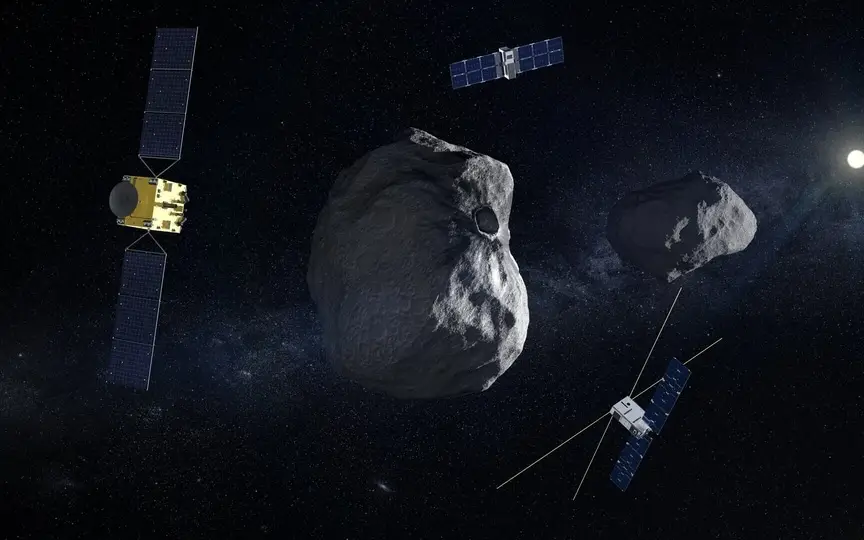Uncovering the Mysteries of Asteroid Cores with ESA’s Hera Mission
The European Space Agency (ESA) has acquired an impressive addition for its Hera mission – a compact radar specifically designed to be installed on the Juventas CubeSat. This mini-radar is poised to achieve an extraordinary milestone by capturing images of the inner structure of an asteroid. The main objective is to focus on Asteroid Dimorphos, which is approximately the same size as the Great Pyramid and experienced a significant change in its orbit due to the impact of NASA’s DART spacecraft last year.
Alain Herique, lead scientist at Grenoble Alpes University’s Institut de Planetologie et d’Astrophysique de Grenoble (IPAG), expressed his excitement at the delivery, which was an important milestone for the project. Although the radar has been handed over, the group’s work is far from finished. The next steps include integrating the radar into the CubeSat and ensuring its optimal performance in space.
Challenges and preparations
Space beyond Earth’s orbit is full of high-energy particles that can damage electronics. Because of this challenge, the components of the mini-radar had to undergo rigorous radiation testing before they were considered space-ready. The radar, known as JuRa, is a compact instrument developed by a Luxembourg company called EmTroniX, known for its innovative designs for “New Space” missions.
Innovative design for a unique task
JuRa’s radar design is based on a similar radar that flew on ESA’s Rosetta mission, which probed the depths of comet 67P/Churyumov–Gerasimenko. What sets JuRa apart is its adaptation to the specific conditions of Dimorphos. The Juventas CubeSat orbits the asteroid slowly, allowing JuRa to send signals repeatedly to improve the quality of the collected data.
Scheduled for launch in 2024, the Juventas CubeSat will embark on a Hera journey to the Didymos binary asteroid system. With this mission, JuRa can achieve a groundbreaking mission inside an asteroid by sounding. The radar penetrates up to 100 meters deep into Dimorphos and reveals its secrets layer by layer.
The JuRa team is already considering possible applications of the radar beyond Dimorphos. Cooperation with other space agencies is being explored, and there is even talk of using JuRa to study the Apophis asteroid during its flyby of Earth in 2029.
In a few years, thanks to the efforts of dedicated scientists and engineers, a small radar system will provide us with unparalleled views of the asteroid’s heart. JuRa’s journey will not only expand our understanding of asteroids, but also advance planetary defense strategies to keep our home planet safe.




